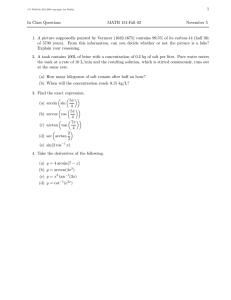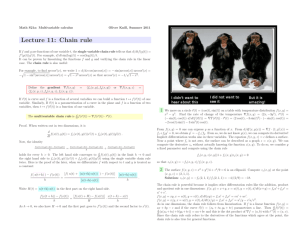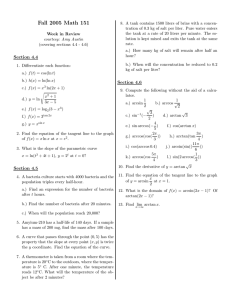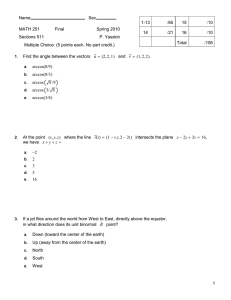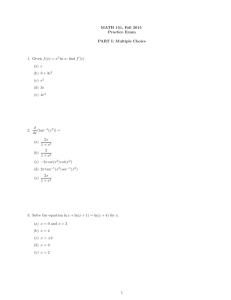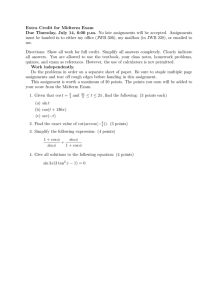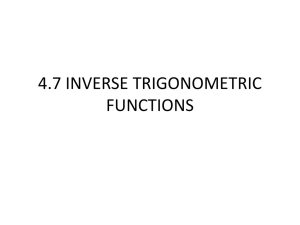Document 13742251
advertisement
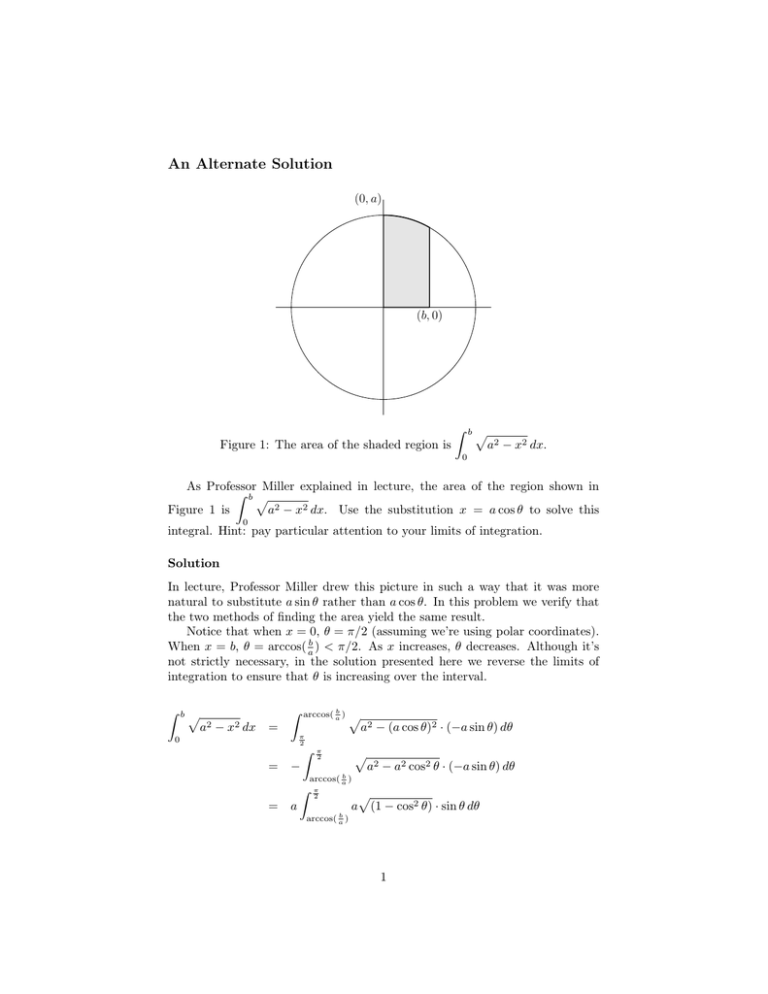
An Alternate Solution (0, a) (b, 0) � Figure 1: The area of the shaded region is b � a2 − x2 dx. 0 As Professor Miller explained in lecture, the area of the region shown in � b� Figure 1 is a2 − x2 dx. Use the substitution x = a cos θ to solve this 0 integral. Hint: pay particular attention to your limits of integration. Solution In lecture, Professor Miller drew this picture in such a way that it was more natural to substitute a sin θ rather than a cos θ. In this problem we verify that the two methods of finding the area yield the same result. Notice that when x = 0, θ = π/2 (assuming we’re using polar coordinates). When x = b, θ = arccos( ab ) < π/2. As x increases, θ decreases. Although it’s not strictly necessary, in the solution presented here we reverse the limits of integration to ensure that θ is increasing over the interval. � b � a2 − x2 dx b arccos( a ) � = � a2 − (a cos θ)2 · (−a sin θ) dθ π 2 0 � = π 2 � − a2 − a2 cos2 θ · (−a sin θ) dθ b arccos( a ) � = π 2 a a � (1 − cos2 θ) · sin θ dθ b arccos( a ) 1 = 2 � π 2 a � sin2 θ · sin θ dθ b arccos( a ) = = = = � b 0 � a2 − x2 dx = 2 � π 2 a b arccos( a ) π 2 sin2 θ dθ (from the diagram, sin θ > 0) � 1 − cos 2θ dθ b 2 arccos( a ) � �π θ sin(2θ) 2 a2 − 2 4 b arccos( a ) �� � �� � π π sin(2 · 2 ) arccos( ab ) sin(2 arccos( ab )) 2 2 − − − a 2 4 2 4 � � b )) π arccos( ab ) sin(2 arccos( a − a2 + 4 2 4 a2 � � As Professor Miller noted, the identity sin(2t) = 2 sin t cos t is helpful at this stage. � � � b� b b b ) 2 sin(arccos( )) cos(arccos( )) arccos( π a a a − a2 − x2 dx = a2 + 4 2 4 0 � � π arccos( ab ) sin(arccos( ab ))( ab ) 2 = a − + 4 2 2 We need to understand arccos( ab ) in order to further simplify this result. To do so, we can draw a diagonal line through the shaded region in Figure 1 to form a right triangle in which an leg of length b meets a hypotenuse of length a at an angle t. Then cos t = ab or t = arccos( ab ). Using this diagram and the √ 2 2 Pythagorean theorem, we conclude that sin(arccos( ab )) = a a−b and so: � � √ � b� π arccos( ab ) b a2 − b2 2 2 2 a − x dx = a − + 4 2 2a a 0 � � b b� 2 π arccos( a ) − = a2 + a − b2 4 2 2 √ � b� a2 ( π2 − t) b a2 − b2 a2 − x2 dx = + 2 2 0 When� Professor Miller did this calculation by substituting a sin θ, he got the √ �b 2 2 2 result 0 a2 − y 2 dy = a 2θ0 + b a2 −b . We can check our work by noting that π our 2 − t is equal to Professor Miller’s θ0 . Alternately, we could note that the area of the largest circular sector con­ tained in the shaded region is π4 a2 − 2t a2 , and the area of the remaining portion √ of the shaded region is 12 b a2 − b2 . 2 MIT OpenCourseWare http://ocw.mit.edu 18.01SC Single Variable Calculus�� Fall 2010 �� For information about citing these materials or our Terms of Use, visit: http://ocw.mit.edu/terms.
